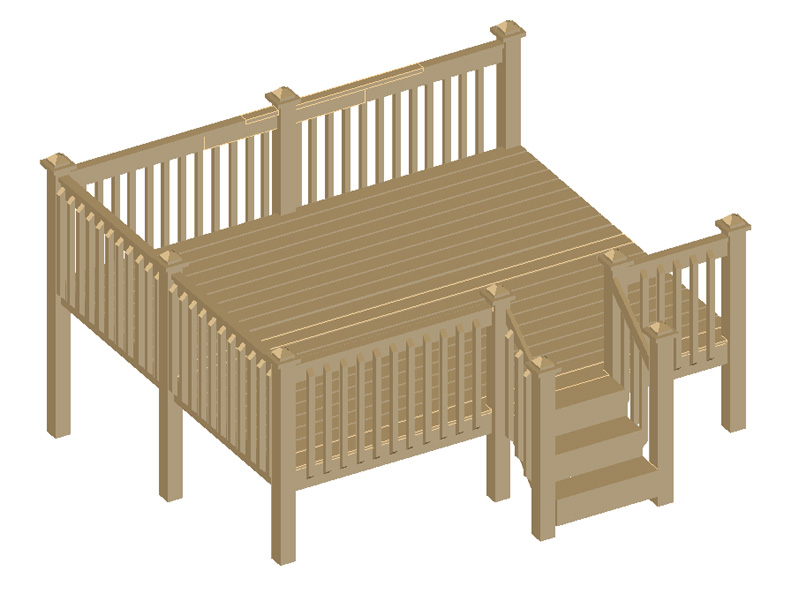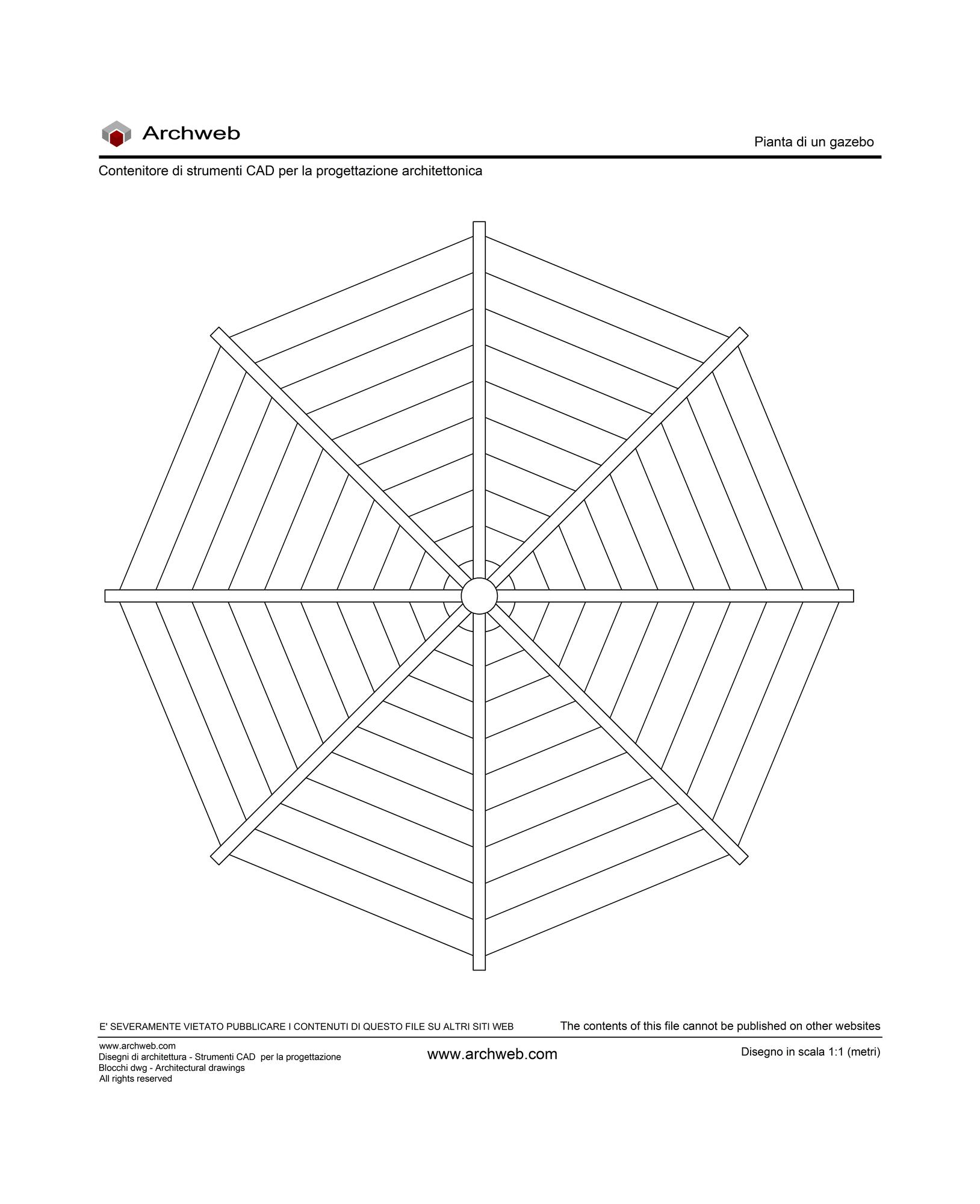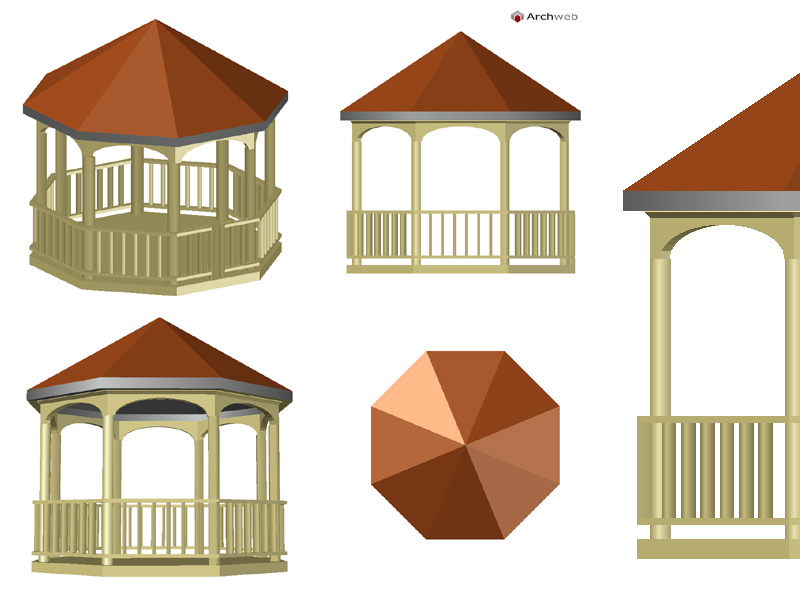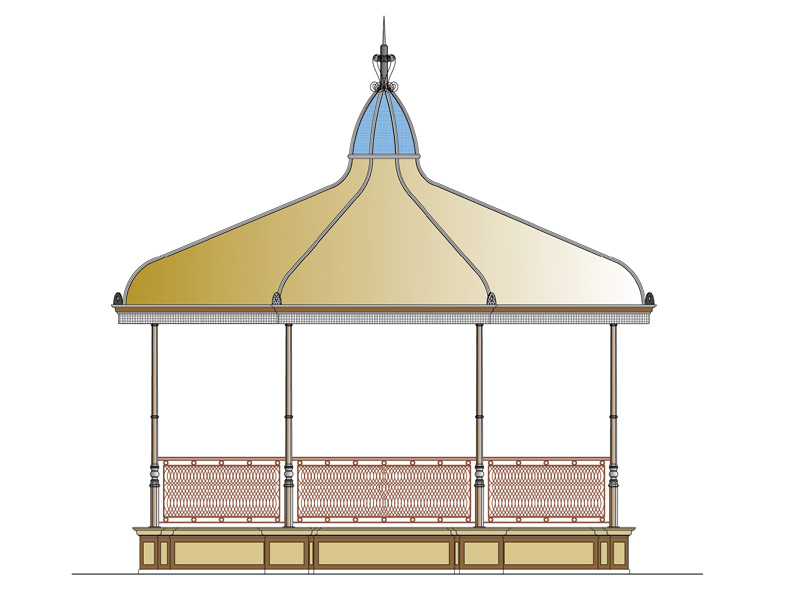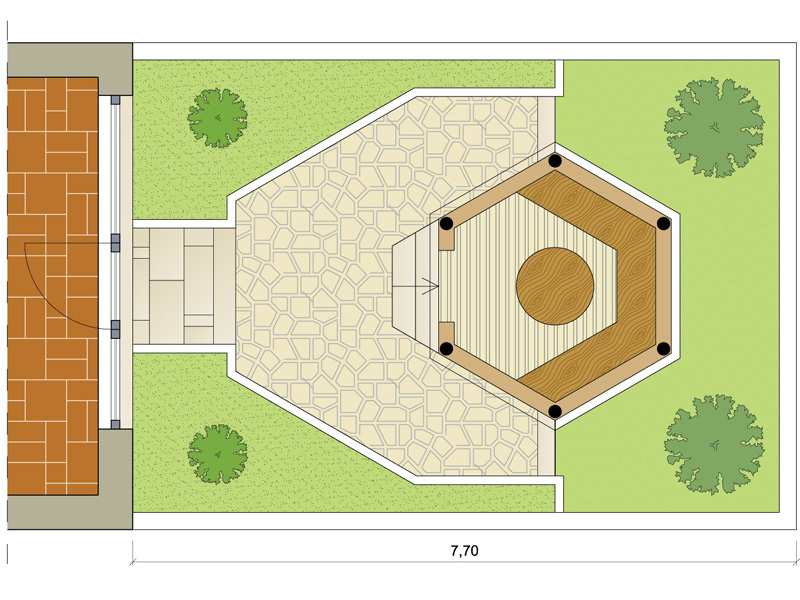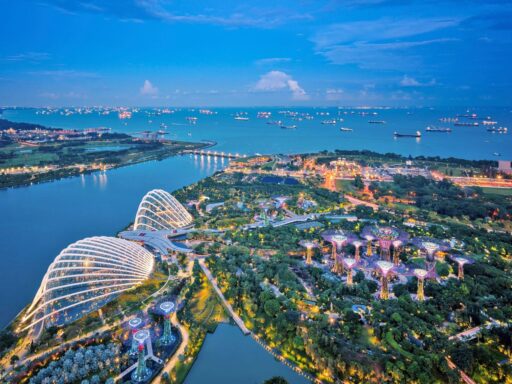Gazebo for parks and urban gardens
Features - Functions - Design
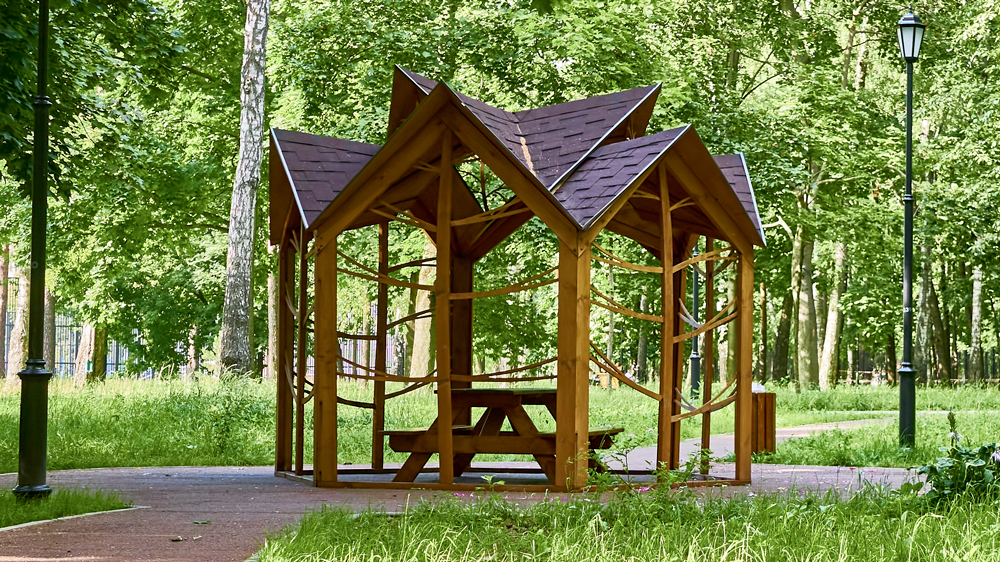
One of the elements that can enrich and enhance the spaces of urban parks and public gardens are gazebos. Gazebos are architectural structures that offer a protected and shaded area, ideal for resting, socializing or organizing outdoor events.
Below, we will explore the features and functions of gazebos in urban parks, as well as the benefits these structures can offer.
What is a gazebo?
A gazebo is a freestanding outdoor structure, typically used as an outdoor shelter or pavilion. It is often found in gardens, parks and other outdoor spaces and offers a comfortable, shaded area to relax and enjoy your surroundings.
The design usually features a roof supported by columns or pillars, which create an elegant and inviting space. The structure can be made of different materials, such as wood or metal, and can be customized to match the aesthetics of the surrounding environment.
Gazebos are versatile structures that can be used for various purposes, such as hosting events, dining or simply providing a quiet retreat. They offer protection from the elements while still allowing for an open and airy feel.
Overall, this is a beautiful and functional addition to any outdoor space, providing both aesthetics and practicality.
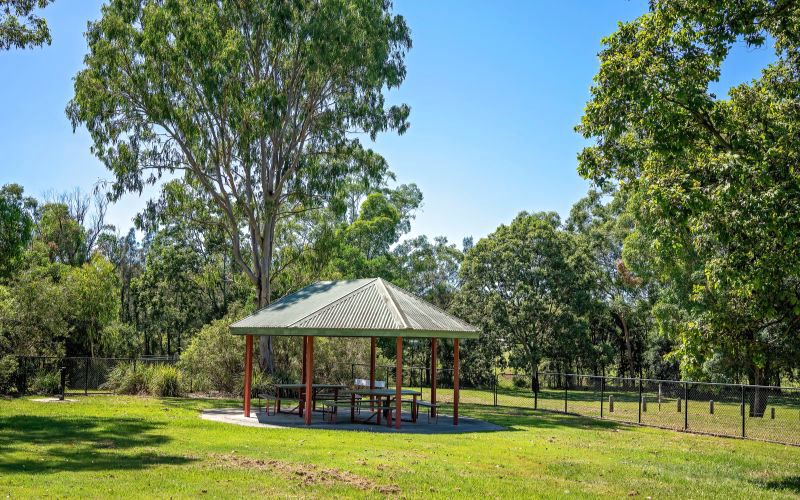
Gazebos in urban public parks and gardens
The integration of gazebos into urban parks and gardens offers numerous advantages. First, they create a point of visual attraction, adding an aesthetic element to the surrounding landscape. These structures can become icons of a park, attracting visitors and tourists. Additionally, gazebos provide shelter from the sun and rain, allowing people to enjoy green spaces even in adverse weather conditions.
Characteristics
When choosing gazebos for urban parks, there are several important features to consider.
- Resistence. It is essential to choose a gazebo that is durable and can withstand the wear and tear of a public space. Urban parks often attract large crowds and experience heavy foot traffic, so the gazebo must be made of sturdy materials such as wood, steel or aluminum. Additionally, it must have a weatherproof finish to protect it from the elements. This way the structure will remain in good condition for years to come, minimizing the need for frequent repairs or replacements.
- Dimension. The gazebo must be large enough to accommodate a significant number of people, as urban parks are often gathering places for community events and activities. It should also be equipped with ample seating, such as benches or tables, to provide park visitors with a comfortable space to relax and enjoy their surroundings.
- Design. The gazebo must be aesthetically pleasing and in harmony with the surrounding environment, to enhance the overall beauty of the park.
- Accessibility. The gazebo must be easily accessible to all park visitors, including people with mobility difficulties. This means making sure there are ramps or other accessible paths leading into the gazebo, as well as providing seating options suitable for people with disabilities. Accessibility not only promotes inclusiveness, but also ensures that everyone can fully enjoy the amenities offered by the park.
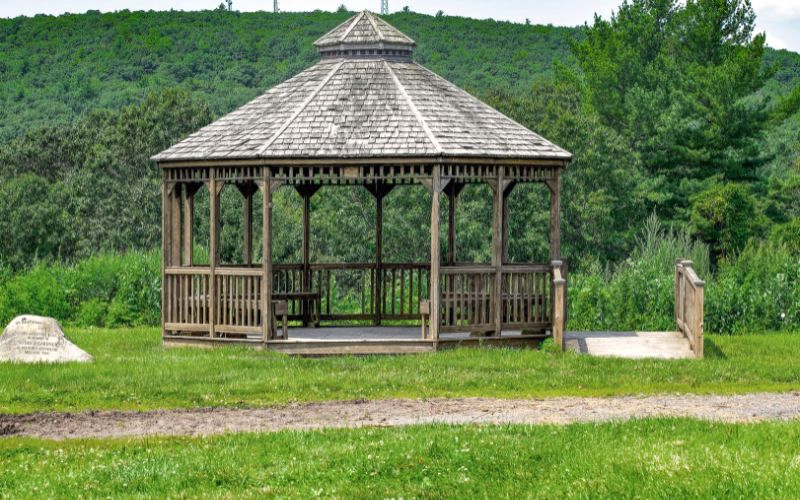
Functions
Gazebos play an important role in improving the functionality and aesthetics of urban parks. These structures, typically open on all sides and equipped with a roof, perform multiple functions for the benefit of park visitors.
- Shelter from the weather. Whether it’s scorching sun or unexpected rain, people can take refuge under the gazebo and continue enjoying the park. This is especially important in urban areas, where green spaces may be limited and people rely on parks as a place to relax and rest.
- Gathering spaces. They are a hub for social activities, such as picnics, family reunions or community events. Thanks to their open design, gazebos encourage interaction and create a sense of community among park visitors. People can gather, sit, converse or share meals. The presence of gazebos in urban parks promotes a sense of belonging and strengthens the social fabric of the community.
Additionally, gazebos offer park visitors the opportunity to appreciate the surrounding nature. Thanks to their strategic location in parks, gazebos often offer panoramic views of the surrounding greenery or scenic landscapes. Visitors can sit inside the gazebo and enjoy the beauty of nature, finding respite from their busy urban life. This connection with nature has proven psychological benefits, promoting relaxation and reducing stress levels.
Finally, gazebos can also serve as platforms for activities and performances in the park. Their open design and raised platforms make them ideal for hosting concerts, small theater shows or even educational workshops. This adds cultural value to the park space and enriches the overall visitor experience.
Considerations for designing gazebos for urban parks
When designing gazebos for urban parks, several important considerations must be taken into account.
- Design. It must be in harmony with the general aesthetics of the park. It must integrate seamlessly with the surrounding landscape and architecture, creating a cohesive and visually pleasing environment.
- Materials. They must be durable and able to resist wear and tear.
- Dimensions and layout. They must be carefully planned to ensure that the gazebo can accommodate a sufficient number of park visitors, whilst maintaining a sense of intimacy and privacy.
- Accessibility. The gazebo must be easily accessible to people of all abilities, including those with mobility difficulties. This means providing ramps or other accessible routes leading to the gazebo, as well as ensuring there is enough space inside for people in wheelchairs to move around comfortably. Additionally, the gazebo must have seating accessible to people with disabilities, such as benches with armrests or spaces for wheelchairs.
Furthermore, it is becoming increasingly important to incorporate sustainable design principles into the construction of gazebos in urban parks. This includes using eco-friendly materials, such as sustainably sourced wood or recycled materials, and implementing energy-efficient features such as solar panels for lighting. By taking these sustainable design considerations into account, gazebos can not only enhance the beauty and functionality of urban parks, but also contribute to the overall sustainability of the surrounding environment.
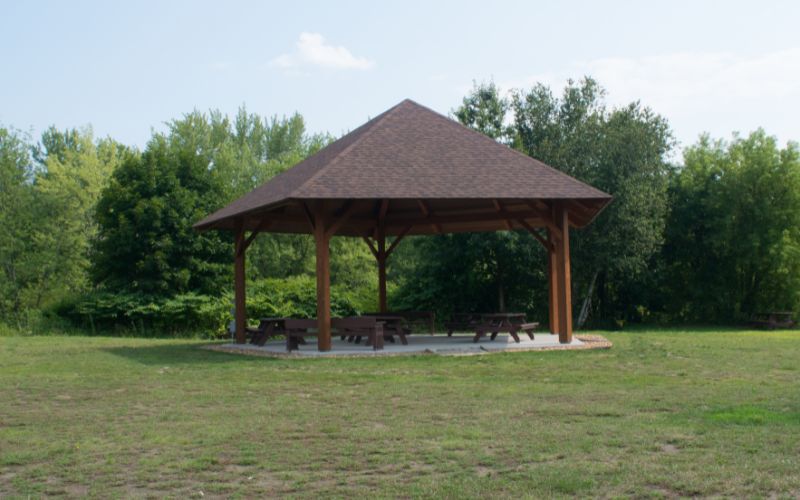
Suggestions for integration into urban park planning
When planning an urban park, it is advisable to consider the integration of gazebos from the early planning stages. Gazebos can be positioned in strategic points of the park, such as scenic areas or points of interest. Furthermore, it is possible to create a layout that encourages the natural flow of people around the gazebos, creating paths and rest areas. In this way, gazebos become functional and attractive elements within the urban park.
Conclusions
Gazebos are essential elements for enriching and enhancing urban parks and public gardens. They offer a shaded and protected area, ideal for resting, socializing or organizing outdoor events. The choice of the type of gazebo, the features to consider and regular maintenance are essential to guarantee the durability and functionality of these structures. Integrating gazebos into urban park planning can make these spaces even more welcoming and attractive to visitors.
Cover photo: lempro.moscow on Depositphotos.com
Tags
related dwg drawings
DWG
DWG
DWG
DWG



























































